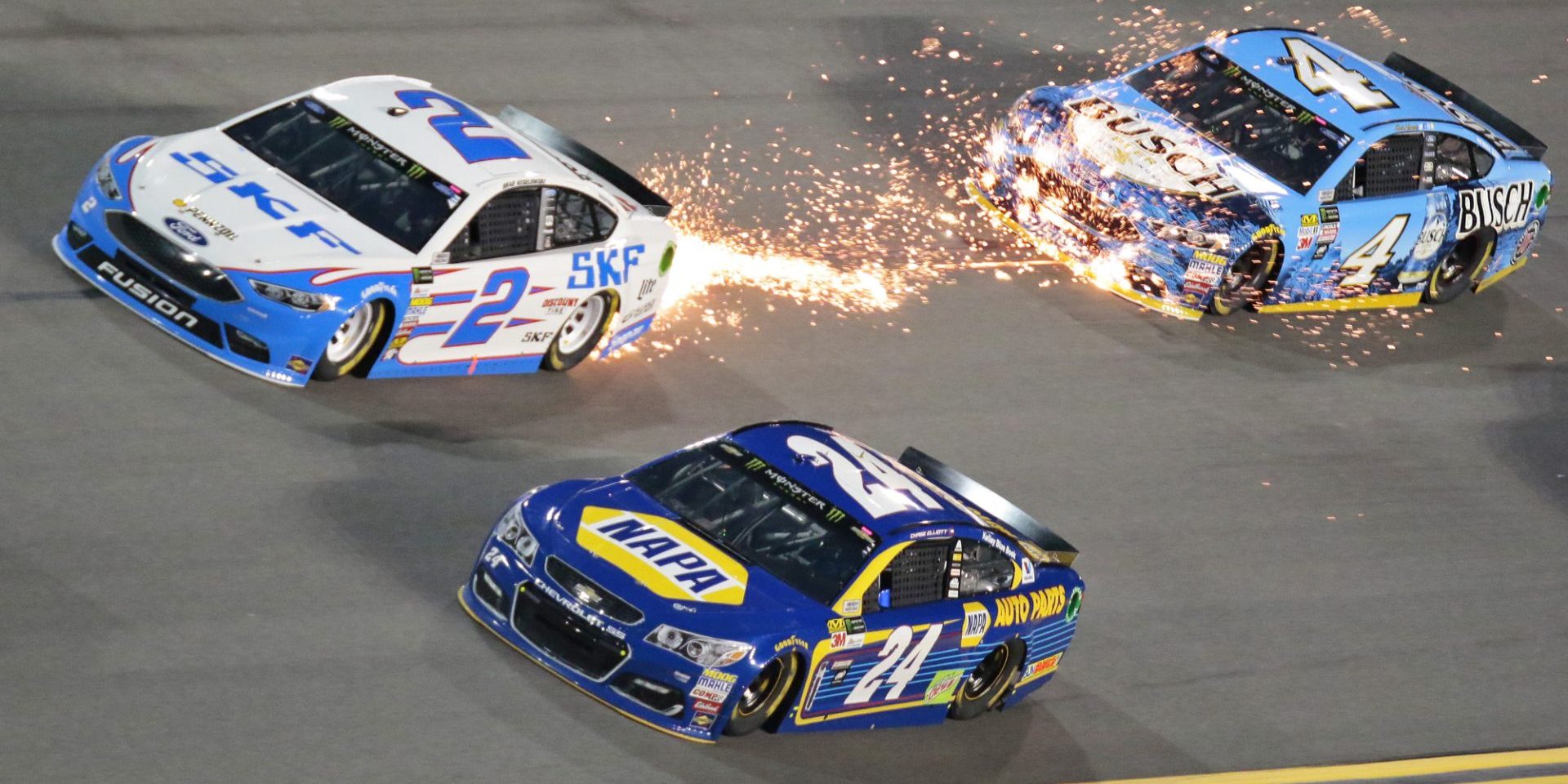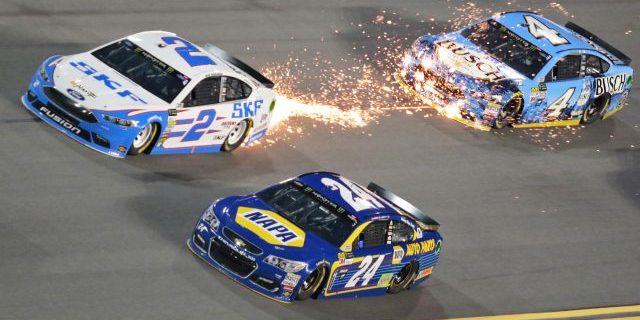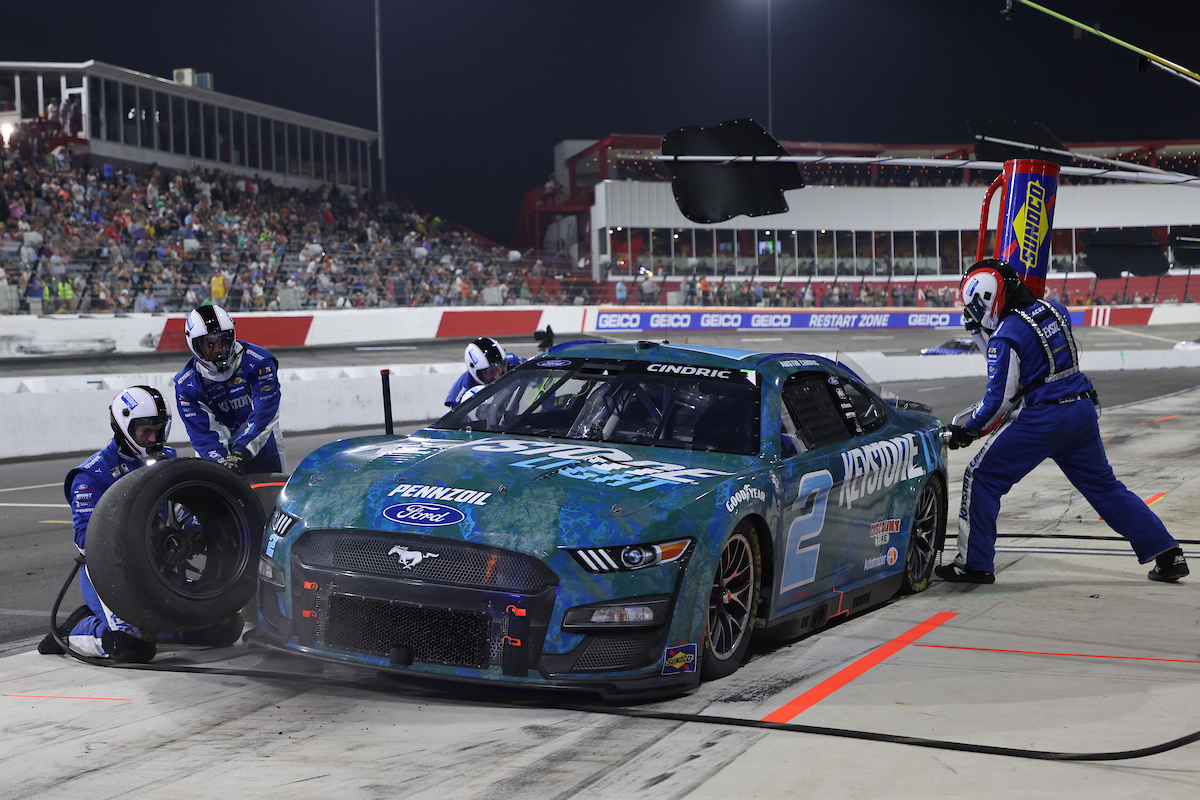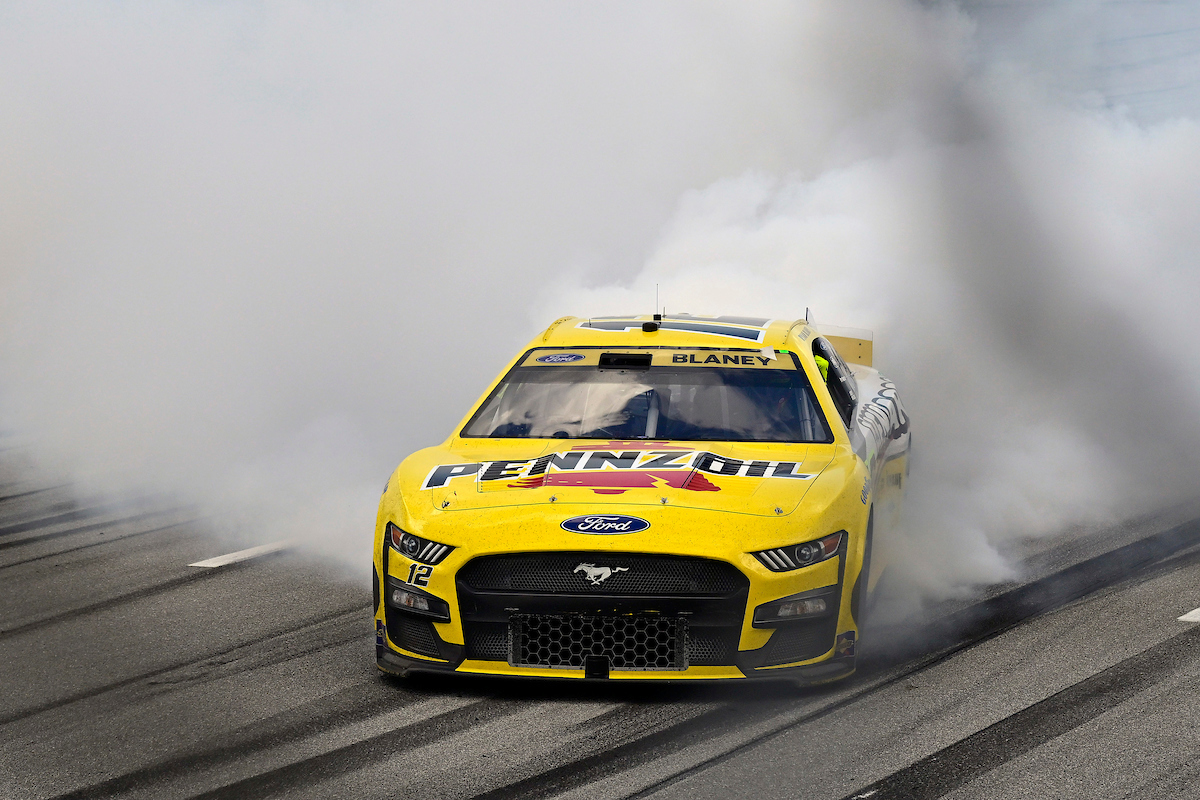How Many Horsepower Does a NASCAR Have? Unveiling Racing Car Power Specs


NASCAR engines are marvels of automotive engineering, designed to withstand the rigors of high-speed racing while delivering exceptional performance. Horsepower (HP) is a unit of measurement for engine power and represents the engine’s capacity to do work. In NASCAR, the amount of horsepower an engine produces is a critical factor that can influence a team’s success on track. The engines used in NASCAR vehicles are capable of producing high horsepower figures, which is necessary for the speeds achieved in stock car racing.
The specific horsepower output of a NASCAR engine can vary depending on regulations and the type of track. For instance, recent regulations set different horsepower limits for various tracks to ensure both safety and competitiveness. In the 2022 NASCAR Cup Series, most tracks utilized engines restricted to 670 horsepower, which allows cars to achieve high speeds while maintaining a balance of performance. However, at superspeedways like Daytona and Talladega, the engines were limited to a lower horsepower of 510 to reduce speeds for safety purposes. These regulations are subject to change as NASCAR continually adapts its rules to improve racing and safety standards.
Table of Contents
NASCAR Engine Specifications
NASCAR engines are complex and powerful, customized specifically for the rigorous demands of stock car racing. These engines are built for high performance with a focus on horsepower output and reliability.
Engine Types and Power Outputs
NASCAR uses naturally-aspirated pushrod V8 engines across four main manufacturers: Chevrolet, Ford, Toyota, and previously Dodge. The specific displacement of these engines is tightly regulated, typically 358 cubic inches (about 5.86 liters). These motors are known for their immense power and durability.
The power output of these engines can vary:
- For most intermediate tracks, road courses, and short tracks, the target horsepower is 670 HP.
- On high-banked superspeedways such as Daytona and Talladega, a different horsepower package is used, which restricts the output to 510 HP.
Specifications such as cylinder bore and compression ratio are strictly defined, falling into ranges that strike a balance between power production and engine longevity. The distinctive sound and performance of these V8 engines have been a defining feature of NASCAR through various vehicle generations, from Generation 5 to the current Next Gen cars.
Horsepower and Speed Relevance
Horsepower is directly tied to a car’s performance, dictating both acceleration and top speed. It’s a critical factor in NASCAR racing, as speed differentials can significantly impact race strategy and results. The carefully calibrated horsepower restrictions serve to level the playing field among competitors and enhance driver safety. The relevance of horsepower is evident on every lap, as it affects overtaking abilities, drafting techniques, and fuel management throughout the race.
Through these engine specifications, NASCAR aims to maintain a competitive balance while still providing the thrilling on-track action that fans expect.
NASCAR Series and Regulations
In the NASCAR Cup Series, the rules and regulations are designed to ensure a balance of competition and safety across all events.
Overview of Cup Series
The NASCAR Cup Series represents the pinnacle of stock car racing, featuring the most advanced and competitive vehicles within the sport. Each race within the series is governed by an extensive set of rules that dictate everything from car design to engine specifications. The introduction of the Next Gen car has been a significant transition for the series, leading to notable changes in aerodynamics and performance capabilities. These cars have brought standardized chassis and bodies, plus improved safety features to the racing competition. Depending on the track, like Daytona or Talladega, the NASCAR Cup Series utilizes two horsepower configurations: 550hp for longer tracks and 670hp to balance speed and safety at intermediate and road courses.
Safety and Inspection Procedures
Safety is a top priority within the NASCAR series, and as such, thorough inspection procedures are instituted before and after races. Regulations ensure that the cars meet strict safety standards, checking key components such as tires, brakes, and aerodynamic elements. The aerodynamic design, which includes factors like downforce, is critical to a car’s performance and adheres to specific guidelines to minimize risks during high-speed competition. Inspections are rigorous to guarantee that modifications made to a car, especially for reducing horsepower at certain tracks, comply with NASCAR’s safety objectives. The meticulous scrutiny of Next Gen cars ensures that the vehicles not only perform within expected parameters but also offer maximum protection for the drivers.
Race Tracks and Performance
In NASCAR, the track type dictates the car’s horsepower configuration to balance competition with safety. Here are two key factors that explain how track configurations and vehicle dynamics alter performance.
Track Configurations
NASCAR’s diverse range of tracks influences the horsepower output of the engines to suit the specific challenges each track presents. Superspeedways like Daytona International Speedway and Talladega Superspeedway are characterized by their longer lengths, typically over 2 miles, necessitating restricted horsepower to enhance driver safety. Cars racing on these tracks are limited to 510 horsepower. In contrast, intermediate tracks, like Charlotte Motor Speedway, along with most road courses, allow engines to produce up to 670 horsepower to facilitate higher speeds and acceleration. Short tracks, including Martinsville Speedway and Bristol Motor Speedway, along with venues like Phoenix Raceway and New Hampshire Motor Speedway, require a unique balance of power and handling, also using the 670 horsepower package.
Influence on Vehicle Dynamics
Performance at a NASCAR race is directly impacted by the track layout. At superspeedways, aerodynamics and engine restrictions lead to tightly bunched racing, where the reduced horsepower helps manage top speeds and ensures safety. When at tracks like Atlanta Motor Speedway, the balance of horsepower allows for higher speeds that test both driver skill and mechanical endurance. At short tracks, the emphasis is on handling and acceleration rather than top speed, demanding drivers to make precise maneuvers in close quarters. Vehicle dynamics at each track type require teams to adjust their cars for the optimum blend of speed, handling, and endurance.
Technical Components and Innovations
NASCAR vehicles are engineered to achieve high performance through precision in technical components and advancements in automotive technology.
Restrictor Plates and Their Impact
Restrictor plates are metal plates with holes that limit the amount of air entering the engine’s intake system, effectively controlling maximum speed and horsepower. The size of the holes in the restrictor plates can dictate a NASCAR car’s maximum power. In the past, restrictor plates have been used to reduce speeds at superspeedway events to ensure safety.
- Function: Reduces engine power
- Impact: Controls car’s maximum speed
Advancements in Aerodynamics and Engines
NASCAR has made significant progress in the area of aerodynamics and engine technology, with high-performance engines capable of generating upwards of 750 horsepower. Aerodynamics play a pivotal role in a race car’s performance.
- Naturally Aspirated Engines: NASCAR engines rely on advanced engineering to produce high power without the need for turbochargers or superchargers.
- Aerodynamics and Downforce: Spoilers are tailored to the type of track, varying in size to manipulate downforce and handling stability.
- Components: From carburetors to intake valves, each component is designed to maximize fuel and air delivery to the engine.
By emphasizing the development of naturally aspirated engines and nuanced aerodynamic detailing such as spoilers, NASCAR vehicles attain competitive speeds and adhere to safety standards without depending on additional elements like turbochargers and superchargers.
Racing Strategy and Driver Expertise
In NASCAR racing, driver expertise and racing strategy are just as vital as the horsepower underlying each vehicle’s hood. Strategy on the track is influenced by the balance between power and speed—elements that are pivotal in a race where lead changes occur rapidly.
Understanding Vehicle Dynamics
- Power: Engines tuned to around 670 horsepower for most tracks, and 510 horsepower for restrictor plate racing, which includes Daytona and Talladega.
- Torque: Critical for acceleration, especially after turns and restarts.
Engine performance, which includes torque and RPMs (revolutions per minute), must be expertly managed by drivers to optimize their car’s potential. The ability to push a car right to the limits of its power without compromising reliability is a skill possessed by elite NASCAR competitors.
Adaptability During the Race
- Lead Changes: Adjusting strategy to maintain or gain position.
- Competition: Understanding competitor’s driving style and strategy.
Drivers must adapt to the dynamic conditions of each NASCAR race, where lead changes are frequent. Driver experience allows for quick decision-making in high-speed scenarios, often dictating their position in the competition.
Collaboration with Engineers
Race strategies are meticulously planned with engineers, factoring in variables like fuel economy, which affects vehicle weight and handling. Engineers and drivers work in tandem to execute pit stops that align with strategic goals, and this collaboration can be decisive in winning a NASCAR event.
Each competition on the NASCAR circuit tests the strategic approach of a team, emphasizing the driver’s expertise and the fine-tuning of power under each car’s hood.










